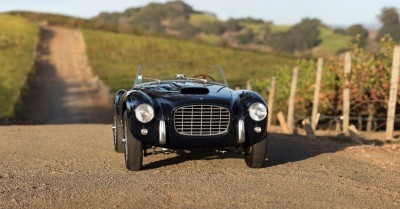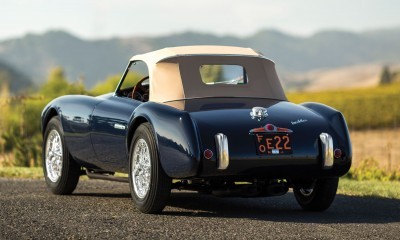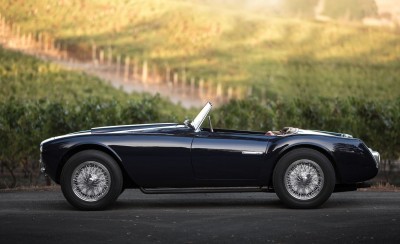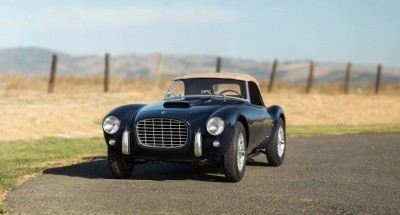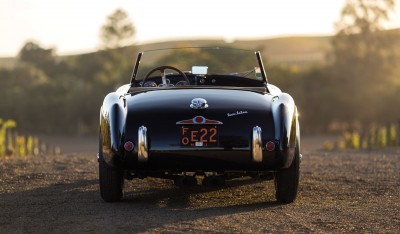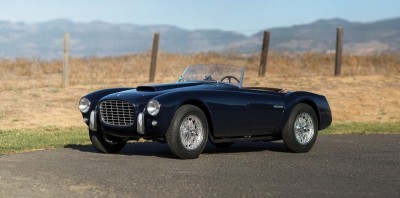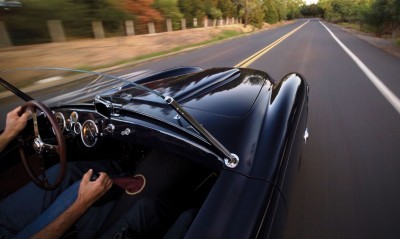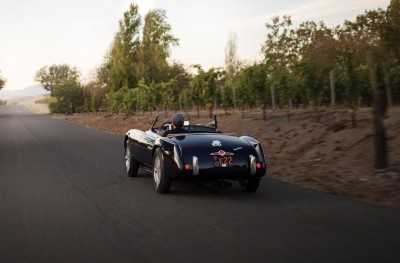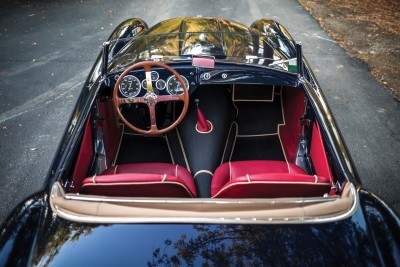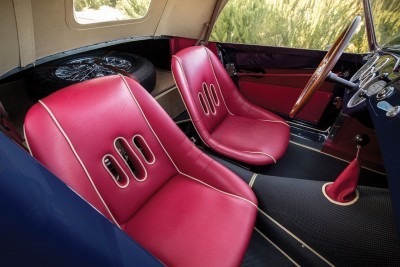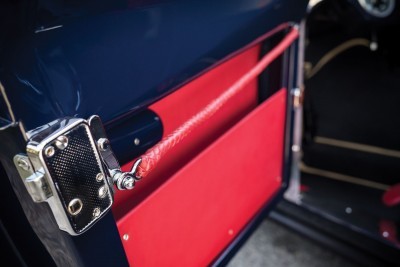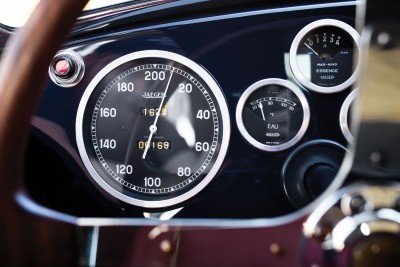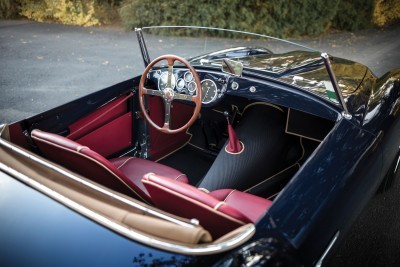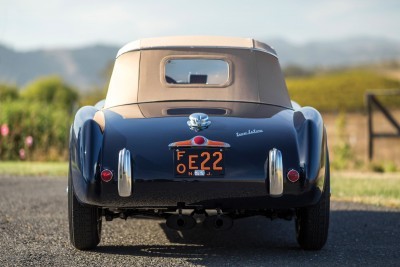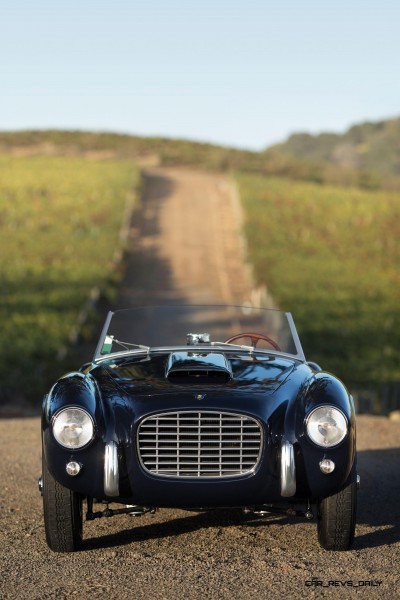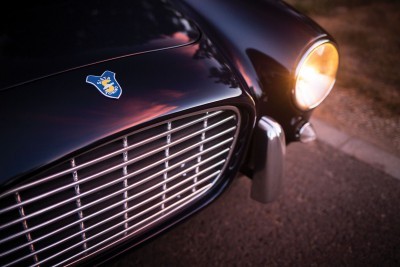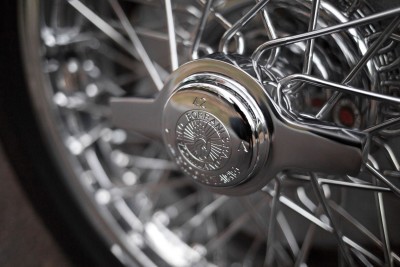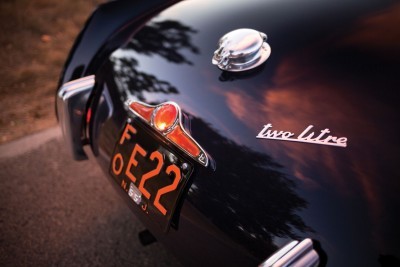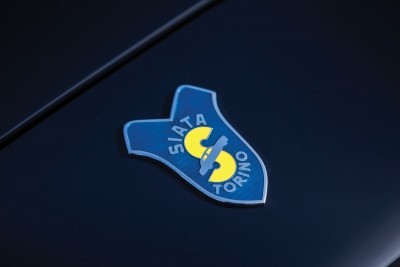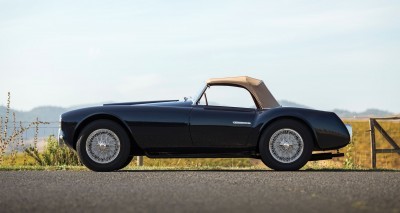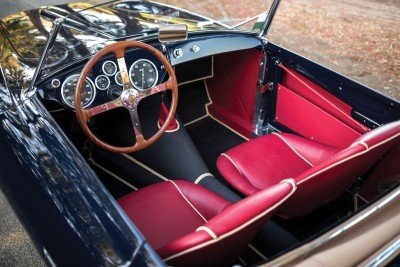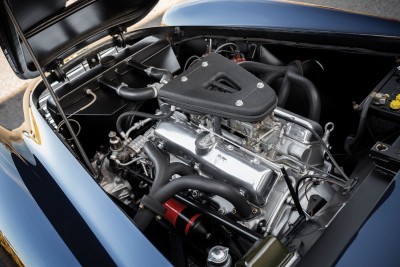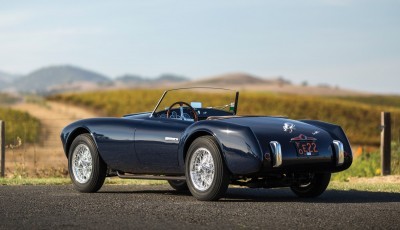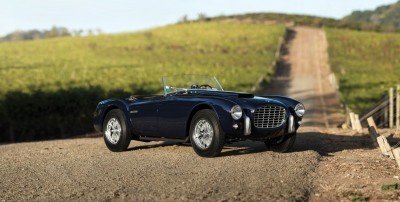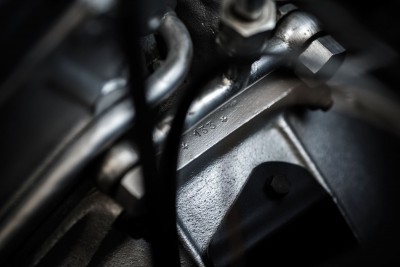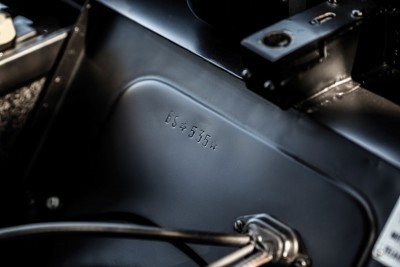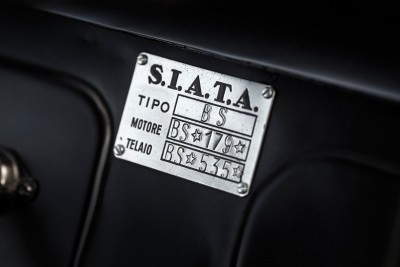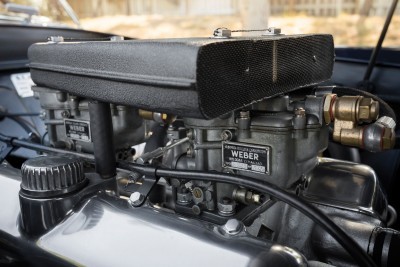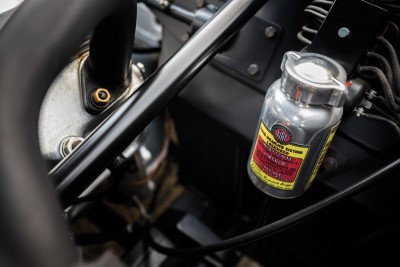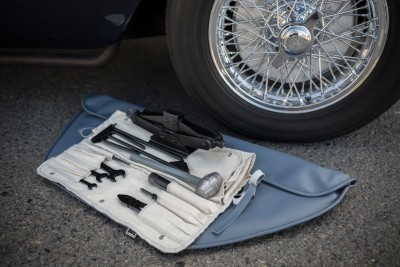 Many people cite the Mazda Miata’s inspirations from English roadsters. But the formula was really perfected well before the Lotus Elan, in Italy by a sports-car consortium names S.I.A.T.A.
Many people cite the Mazda Miata’s inspirations from English roadsters. But the formula was really perfected well before the Lotus Elan, in Italy by a sports-car consortium names S.I.A.T.A.
Swapping “S” for “M” and we get to the Miata name!
Regardless, this 1954 Siata 208S Spider by Motto wears exclusive alloy engine components and even bodywork, ensuring an ultra-light and nimble application of the 125-horsepower.
From a four-cylinder, you assume?
So did we.
But no!
This last-ever Motto Siata 208S runs a 2.0-liter V8 engine with dual Weber carburettors.
The formula would later inspire the Shelby Cobra and many a monster-tuned MX-5!
Special nod to photographer Patrick Ernzen, who really brings out the beauty of this Siata for RM Sotheby’s.
1954 Siata 208S Spider by Motto
RM Sotheby’s
Lot 227
1954 Siata 208S Spider by Motto
To be auctioned on Thursday, December 10, 2015
$1,500,000 – $1,900,000
125 bhp, 1,996 cc OHV 70-degree alloy V-8 engine with twin Weber 36DCZ carburetors, five-speed manual transmission, four-wheel independent suspension with coil springs and shock absorbers, and four-wheel finned alloy drum brakes. Wheelbase: 90.5 in.
- Powered by Fiat’s rare Tipo 104 alloy 8V engine
- The last built of 33 Motto-bodied spiders
- Beautiful and authentic restoration completed in 2011; original, matching-numbers engine
- Best in Class at Pebble Beach and Amelia Island, with awards at other international concours
- Race-winning chassis engineering coupled with striking coachwork rendered in aluminum
- Elegance and power in a lightweight package
“SENSATIONAL NEW ITALIAN SPORTS CAR”
The Siata 208S of the mid-1950s represented a milestone in automotive concept and practice, itself the amalgamation of multiple innovations. For one, the company SIATA was a longstanding tuning specialist rather than a traditional manufacturing concern. This made the Societa Italiana Auto Transformazioni Accessori a qualified disruption to the business of more established brands like Ferrari and Maserati, whose customer base and competition forays were directly threatened by the small company’s remarkably engineered low-volume sports cars.
Furthermore, the 208S was powered by Fiat’s alloy Tipo 104 engine, an unusual two-liter 70-degree V-8 that had been responsible for driving the Turinese manufacturer’s premium Otto Vu Fiat sports car to competition victories across Europe. Only approximately 200 examples of this V-8 engine were made, and when production ceased on the Otto Vu model at about 114 cars, most of the remaining motors were bestowed to Siata (a contractor in the Otto Vu’s build process).
Nearly eight years before Carroll Shelby’s Cobra set the racing world afire with a mass-production V-8 installed in a lightweight aluminum roadster, Siata created a giant killer in 1953 with the alloy-bodied 208S Spider equipped with a high-torque V-8 mated to an advanced five-speed transmission. The open coachwork was penned by Giovanni Michelotti and built by Carrozzeria Motto, a freelance coachbuilder in Turin. Motto had built one-offs for Ferrari in 166 Spider form and 212 export coupes, among others. They received the contract to body the new 208S to Michelotti’s design. With upright rear shoulder flares and a long front deck, the coachwork was a breathtaking evolution of the classic barchetta.
Despite being produced in such a sparing quantity (Motto built just 33 spiders along with the two prototypes by Bertone), the 208S was a marked disruption to the SCCA competition establishment. It surprised more established Italian brands at the races while demonstrating that a small tuning company could deliver cutting-edge chassis specifications, like four-wheel independent suspension and connected steering, at a competitive price.
As such, the marvelously engineered 208S was to become a consummate force in its primary purpose: competitive road racing in the popular under two-liter class. Privateers could buy an exceptionally well-balanced, handsome racecar, with a higher power-to-weight ratio than any comparable opponent, at a somewhat lower price than GT sports cars such as those from Ferrari or Aston Martin. The 208S soon became capable of winning SCCA races, and it was often seen as a cover car for California racing programs in the early 1950s. Actor and noted enthusiast Steve McQueen even entered a Siata in the 1958 Palm Springs Road Races; he called it “my little Ferrari.” The 208S also took the American motoring press to new levels of enthusiasm, with the November 1953 issue of Road & Track calling it the “Sensational New Italian Sports Car.”
Photo Credit: Patrick Ernzen ©2015 Courtesy of RM Sotheby’s

Tom Burkart is the founder and managing editor of Car-Revs-Daily.com, an innovative and rapidly-expanding automotive news magazine.
He holds a Journalism JBA degree from the University of Wisconsin – Madison. Tom currently resides in Charleston, South Carolina with his two amazing dogs, Drake and Tank.
Mr. Burkart is available for all questions and concerns by email Tom(at)car-revs-daily.com.


